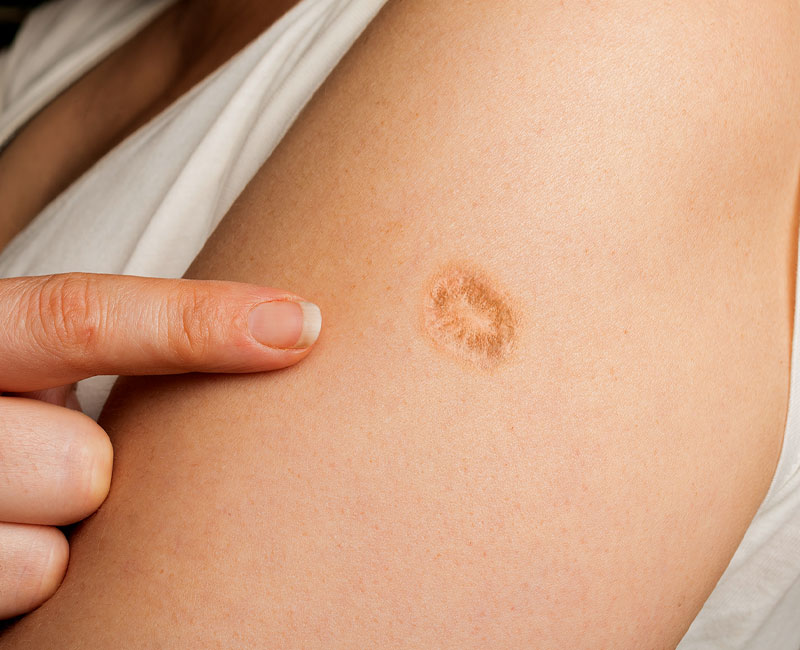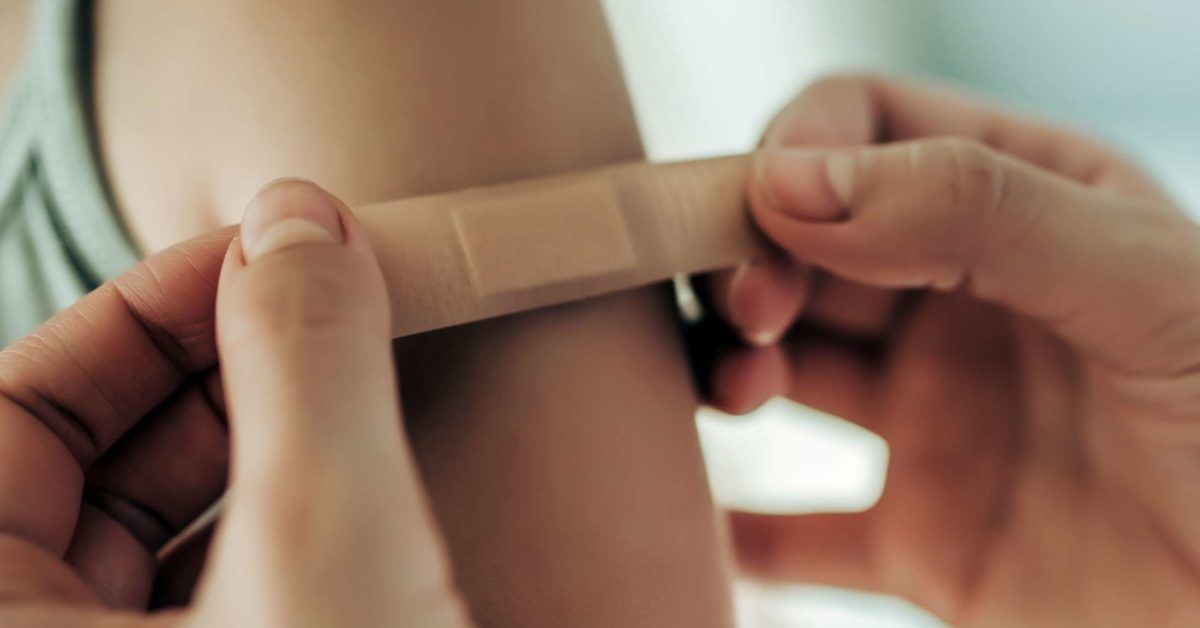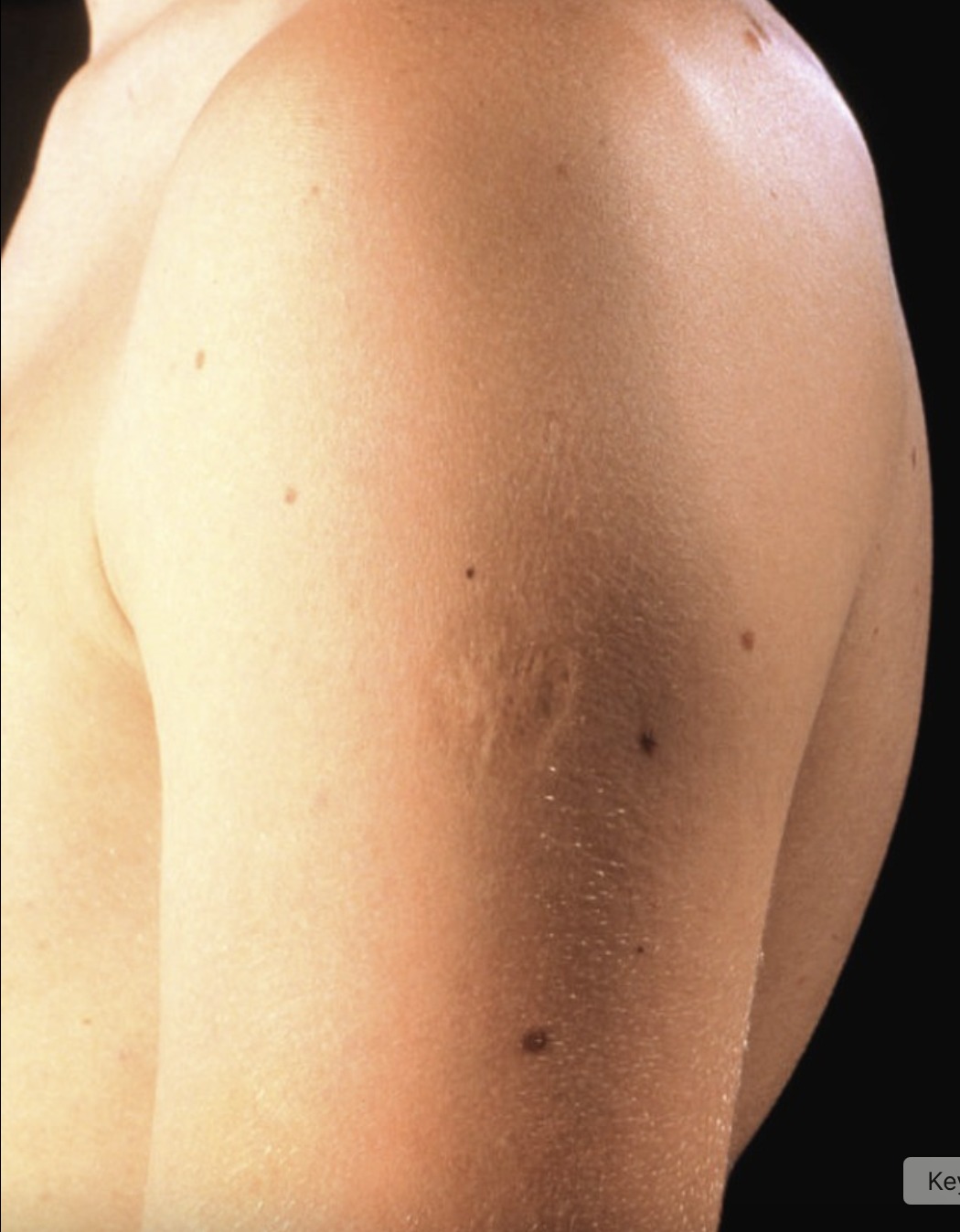When I was a child, I vividly remember noticing a small but distinct scar on my mother’s arm. Located high up on her shoulder, the scar took the form of a ring of small indents, surrounding a larger, deeper indentation. I can’t quite pinpoint why this scar caught my attention, but I was clearly intrigued by it. As time went on, the curiosity faded, and the scar became just another part of my mother’s arm that I hardly noticed.
That was until a few years ago when, while helping an elderly woman off a train, I happened to spot the same scar in the same place on her arm. Instantly, my curiosity was piqued once again. Unfortunately, with the train moving on to its next destination, I didn’t have the chance to ask the woman about the scar. So, I did the next best thing: I called my mother to ask if she remembered what had caused the scar on her arm.

My mother, of course, reminded me that she had explained it before. The scar came from the smallpox vaccine, a vaccine that was once widely administered to prevent the deadly and disfiguring virus. She explained that this vaccine, given to children before the 1970s, left a noticeable scar—a reminder that the person had been vaccinated against a disease that used to terrorize humanity.
Smallpox, a viral and infectious disease, was a major health threat for centuries. It was responsible for high mortality rates, killing roughly 3 out of 10 people infected, according to the Centers for Disease Control and Prevention (CDC). In addition to the risk of death, many survivors were left permanently disfigured. However, due to the widespread success of the smallpox vaccine, the virus was officially declared “eradicated” in the United States in 1952. By 1972, smallpox vaccines were no longer a part of routine vaccinations, as the disease had been completely wiped out.
The Legacy of the Smallpox Vaccine Scar

A Vaccine That Left Its Mark
Before the 1970s, all children were vaccinated against smallpox, and the process left a very clear and lasting mark. This scar became a sort of “vaccine passport,” proof that the person had been successfully vaccinated against smallpox. The vaccine’s impact was so profound that it left a visible, permanent mark on the skin—a badge of immunity, if you will. That same scar, which my mother bears, is shared by millions of people in her age range, as well as others who were vaccinated in the years before the virus was eradicated.
The appearance of the scar is a unique reminder of a vaccine that played a pivotal role in the global fight against smallpox. Despite the vaccine’s success in eradicating the disease, the distinctive scar remains visible on many older individuals, like my mother, as a physical reminder of a time when smallpox was a real and present danger.
Why Does the Smallpox Vaccine Leave a Scar?

The scar from the smallpox vaccine isn’t an accidental byproduct; it is actually a result of the body’s natural healing process after receiving the vaccine. The smallpox vaccine itself was administered in a unique manner compared to other vaccines. Instead of using a needle with a single point of entry, as most vaccines do today, the smallpox vaccine was delivered using a special two-pronged needle.
The vaccination process was more invasive than what we experience with modern injections. The person administering the vaccine would use the needle to make multiple punctures in the skin, targeting the dermis—the layer of skin just beneath the outer epidermis. This technique ensured that the vaccine would be delivered deep enough into the skin to trigger the immune response needed to fight off the virus.
The Development of the Scar

Once the vaccine was administered, the body’s immune system would spring into action. The virus within the vaccine would start to multiply, causing small, round bumps to form at the injection site. These bumps would eventually turn into vesicles—small, fluid-filled blisters. As time passed, these blisters would burst and scab over, eventually healing into the characteristic scar that became so familiar to many people who received the smallpox vaccine.
The resulting scar is typically round or oval-shaped and may have a series of smaller indentations surrounding a larger, deeper indentation in the center. The size and appearance of the scar may vary slightly depending on factors such as the person’s skin type and the specifics of the vaccination process. However, the general appearance remains similar for most individuals who received the vaccine, making it a distinctive marker of their immunity.
Is the Smallpox Vaccine Scar Still Relevant Today?
While smallpox has been eradicated, the smallpox vaccine’s legacy lives on in the form of these distinctive scars. However, the need for smallpox vaccination no longer exists, as the disease was declared eradicated in 1980 by the World Health Organization (WHO) after a successful global vaccination campaign. The smallpox vaccine is no longer part of routine vaccination schedules, and most children today will never experience the telltale scar that came with it.
Nevertheless, the scar remains a powerful symbol of the global effort to eliminate one of the deadliest diseases in human history. It’s a reminder of the success of modern medicine in preventing infectious diseases that once claimed millions of lives.
Although the smallpox vaccine is no longer administered, there are still many vaccines today that protect against other diseases. However, the process for vaccination has evolved significantly. Today, vaccines are generally administered through single injections with needles, causing little to no scarring. The effectiveness of modern vaccines—such as those for measles, mumps, rubella, and influenza—has greatly improved public health, continuing the legacy of the smallpox vaccine in fighting disease.
Are You Old Enough to Have a Smallpox Vaccine Scar?
If you were born before the early 1970s, there’s a good chance you may have a smallpox vaccine scar. For those who were vaccinated during the smallpox eradication campaign, the scar serves as a permanent reminder of the crucial role this vaccine played in protecting not just individuals, but entire populations from a deadly virus.
Have you noticed a smallpox vaccine scar on your own body, or perhaps on the body of a family member or friend? If so, it’s a testament to the legacy of one of the most successful vaccination campaigns in history. The scar is not just a mark on the skin, but a symbol of human resilience and the fight against infectious diseases.
If you’ve never wondered about the origins of that mark before, now is a good time to reflect on how much the world has changed since smallpox was eradicated. And next time you spot a smallpox vaccine scar, whether it’s your own or someone else’s, you’ll know exactly what it represents.
Sources:
-
The History of Smallpox Vaccination – World Health Organization
-
Smallpox and the Smallpox Vaccine – National Library of Medicine
